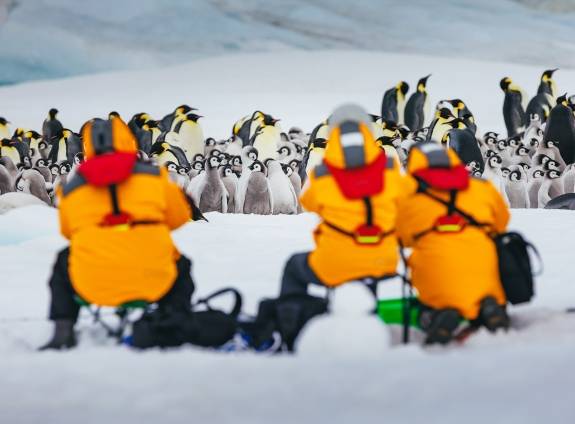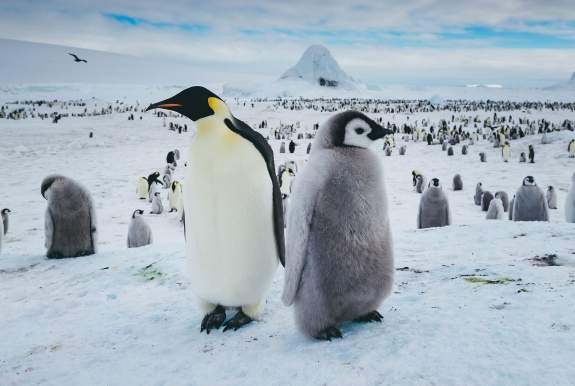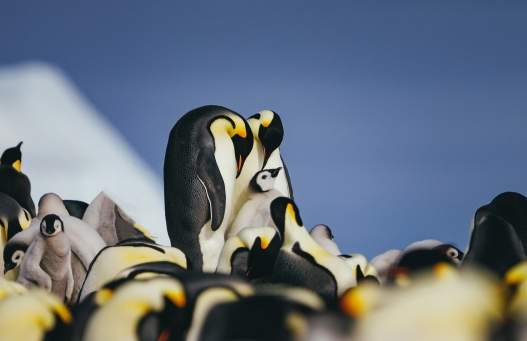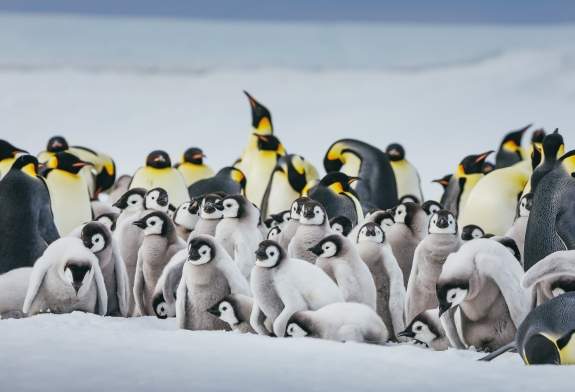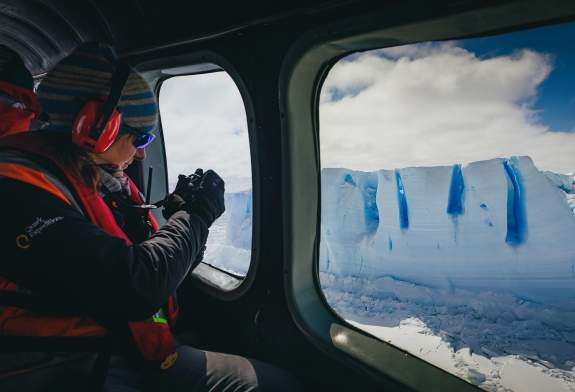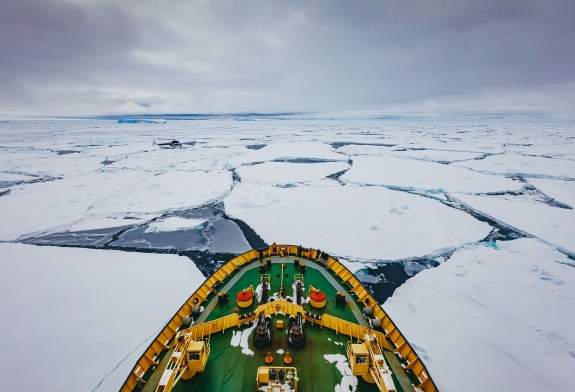You’ve got one main reason – or perhaps 10,000 – to visit remote Snow Hill Island off the east coast of the Antarctic Peninsula. Snow Hill Island is home to a rarely-visited colony of 4,000 pairs of breeding Emperor penguins and their offspring. That’s about 10,000 penguins in one relatively small space. The survival and breeding habits of this particular type of penguins have long fascinated nature-lovers. Not only do they thrive in bitterly cold temperatures – as low as -60°C (-76°F)–but they’re the only species of penguin to breed – and incubate their eggs – on ice rather than on shore.
Reaching Snow Hill Island is a challenge only a handful of travelers have achieved. In addition to crossing the notoriously rough Drake Passage, determined travelers must navigate the icy Weddell Sea by polar ship, and then take a helicopter flight before completing the trek on foot to the emperor penguin rookery.
